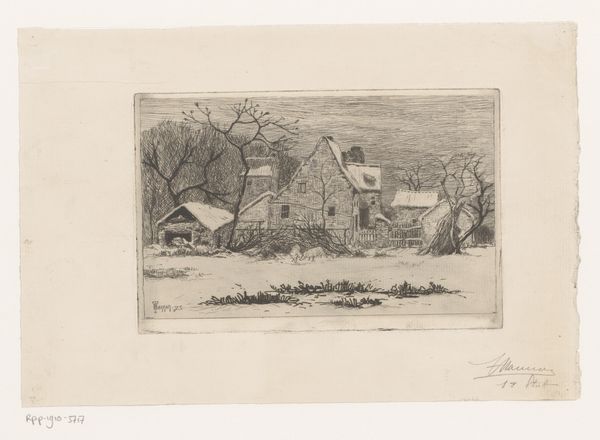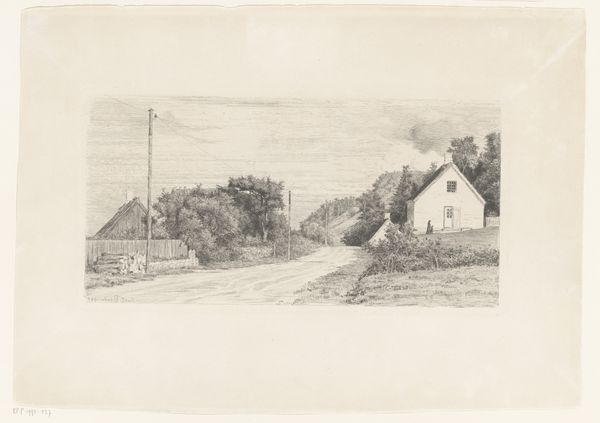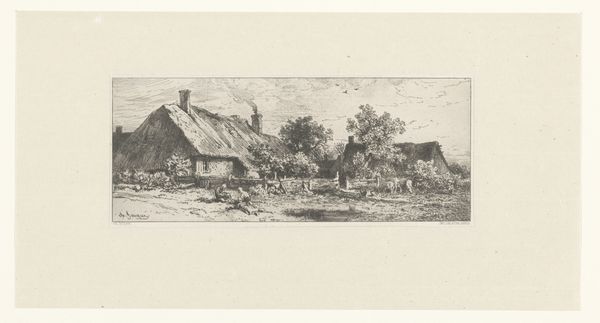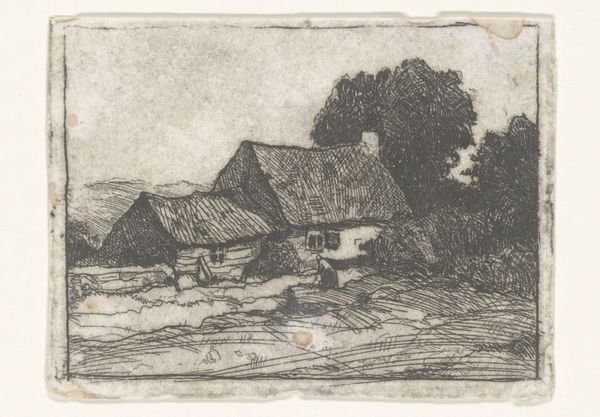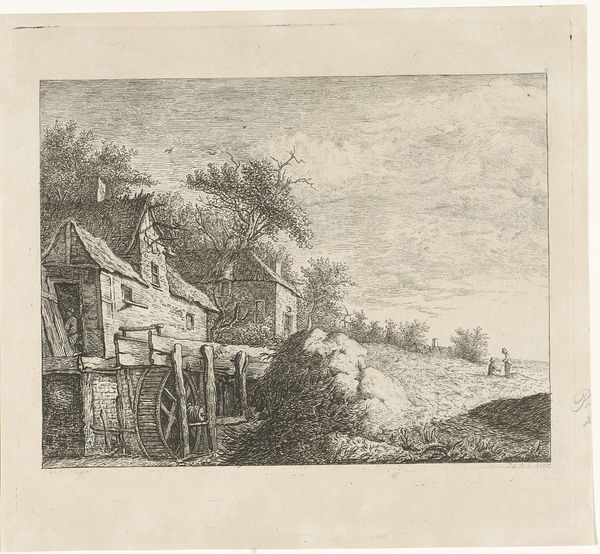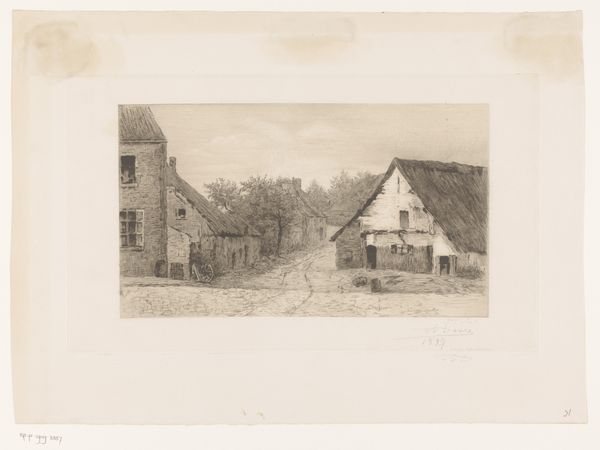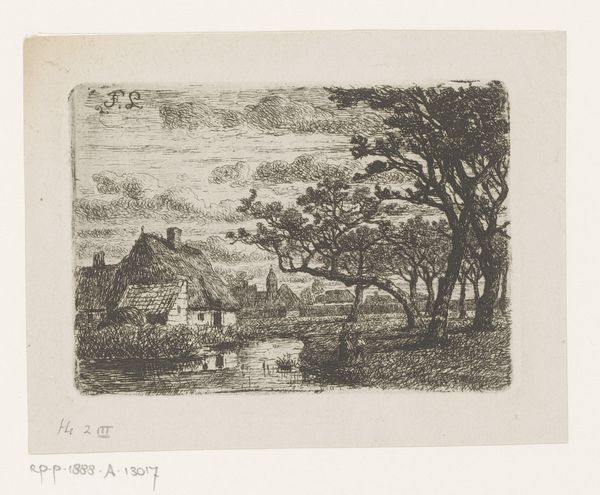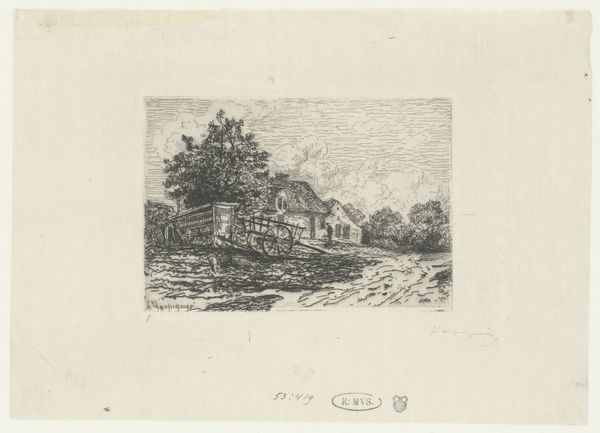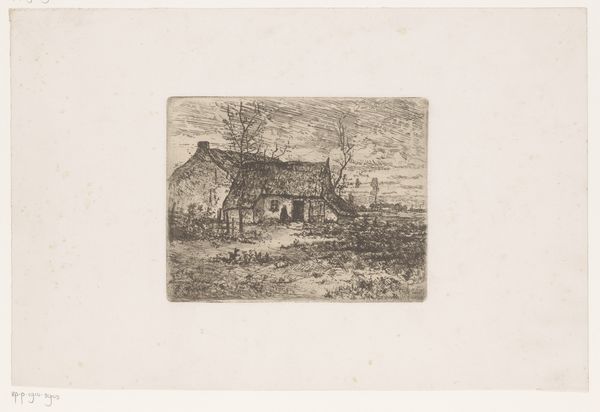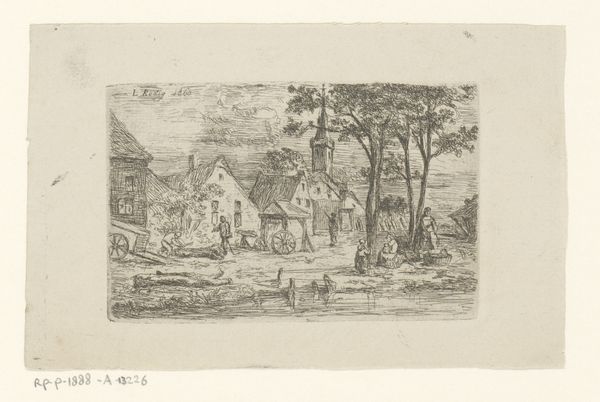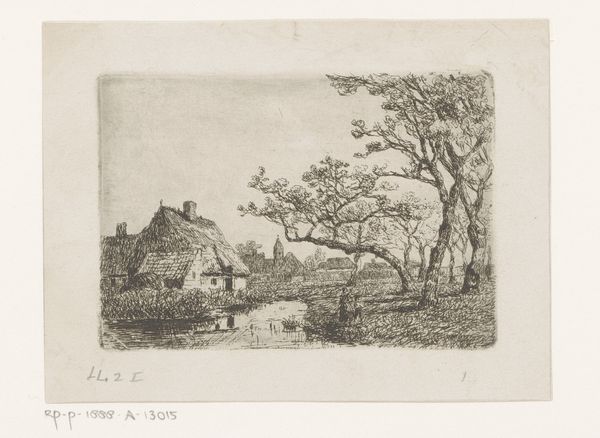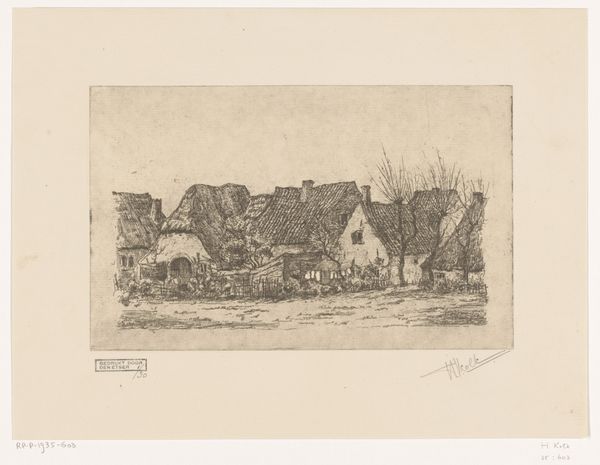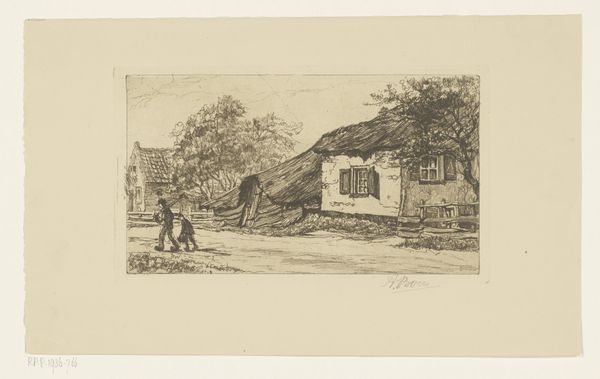
print, etching
# print
#
etching
#
landscape
#
genre-painting
#
realism
Dimensions: height 156 mm, width 240 mm
Copyright: Rijks Museum: Open Domain
Editor: We're looking at "Woman walking with yoke on a village road," an etching from sometime between 1852 and 1906 by Emilie Rolin-Jacquemijns. It feels quite stark, almost monochromatic, despite being a landscape. How do you interpret this work, focusing on its formal qualities? Curator: The most immediate formal quality is the emphasis on line. Note how Rolin-Jacquemijns uses etching to create varied densities, suggesting light and shadow without employing broad tonal areas. Observe how the lines describing the sky are distinct from those of the buildings, creating separate planes. What does that separation do to the sense of space? Editor: It makes it feel a bit compressed, perhaps? Almost as if the sky is a flat backdrop. I also see how the density of the lines around the buildings on the right creates a strong contrast with the open space around the building on the left. Curator: Precisely. The artist plays with compression and expansion using line density to manipulate the pictorial space. This directs the viewer's gaze to different focal points. Consider the composition itself: the path leads the eye into the scene, where does it go and where is it blocked? How does the placement of the figure impact that reading? Editor: It seems to lead to the buildings, but the dark trees block further movement. The figure walking adds a human element, a focal point in the muted landscape. Curator: Note the rhythm created by the placement of light and shadow, leading to the deep darkness in the center and out toward the figure. The composition directs us formally but is subtly undermined, denying any conventional perspective of depth. Editor: This examination of line and composition has truly reshaped my understanding. I see it now as a powerful exploration of form, not merely a landscape depiction. Curator: Indeed. By focusing on the formal components, we gain a more sophisticated appreciation of its visual mechanics, beyond any superficial reading of its subject.
Comments
No comments
Be the first to comment and join the conversation on the ultimate creative platform.
